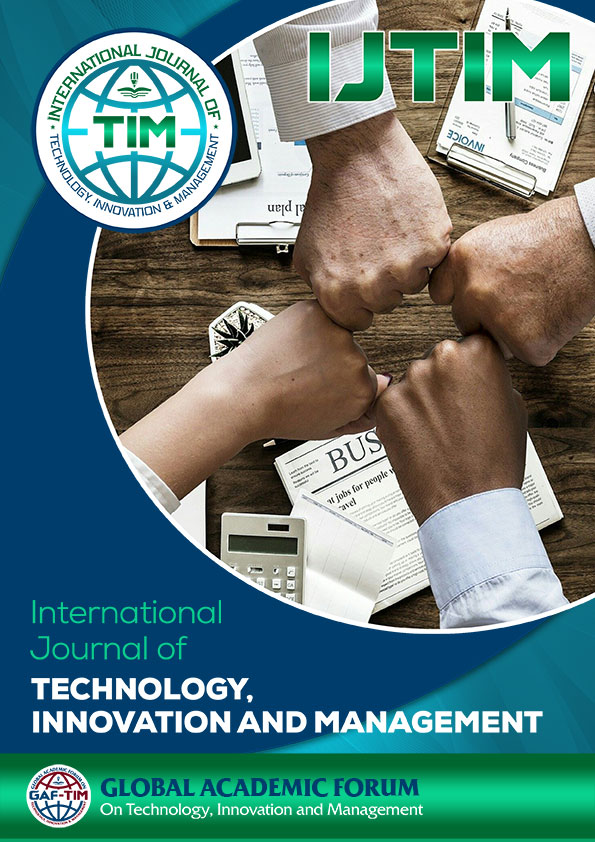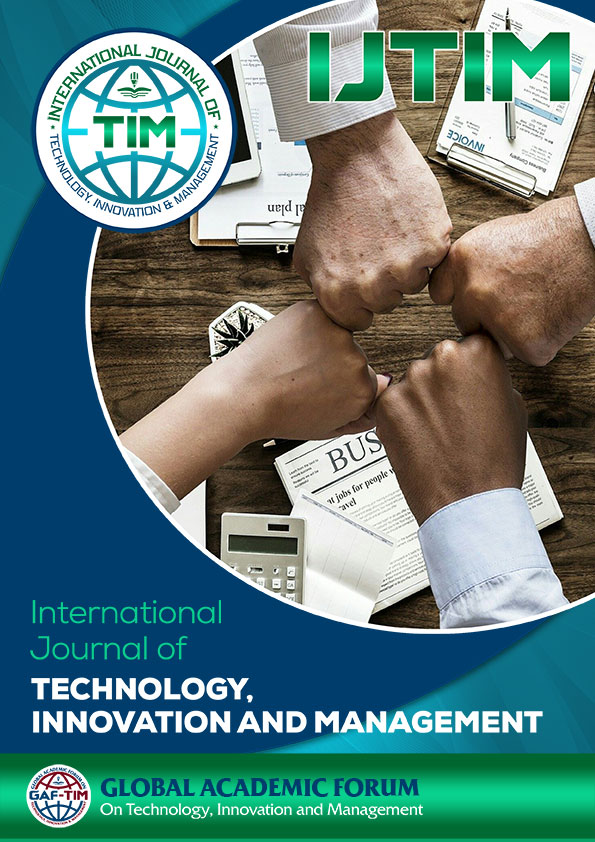The Impact of School Administrators on Teaching and Learning as Strategies for Effective Leadership: A Case Study of Jema’a Lgea
DOI:
https://doi.org/10.54489/kx6nb115Keywords:
Administrators, Teaching and Learning, Leadership, Strategies, Education AuthorityAbstract
This paper explores the critical impact of school administrators on teaching and learning, focusing on strategies for effective leadership in educational settings in Jemaa Local Government Area. School administrators play a pivotal role in shaping the quality of education by creating a conducive learning environment, fostering professional development, and implementing policies that support instructional excellence. The study examines key leadership strategies, such as fostering collaboration among teachers, promoting data-driven decision-making, and encouraging innovative teaching practices. It also discusses the importance of effective communication, resource management, and building a positive school culture. By understanding these strategies, educational leaders can better support teachers and enhance student outcomes. This paper aims to highlight the essential contributions of school administrators in driving educational success and suggest best practices for sustaining a high-quality learning environment.
References
Augustine, C. H., Gonzalez, G., Ikemoto, G. S., Russell, J., Zellman, G. L., Constant, L., . . . Dembosky, J. W. (2009, January 1). Improving School Leadership: The Promise of Cohesive Leadership Systems.
Avolio, B. J., Gardner, W. L., Walumbwa, F. O., Luthans, F., & May, D. R. (2004b). Unlocking the mask: a look at the process by which authentic leaders impact follower attitudes and behaviors. The Leadership Quarterly, 15(6), pp, 801–823.
Ax, M., Conderman, G. and Stephens, J.T. (2001). Principal support essential for retaining special educators. NASSP Bulletin, January 2001, Vol. 85, No. 621, 66-71.
Barbier, E. B., Hacker, S. D., Kennedy, C., Koch, E. W., Stier, A. C., & Silliman, B. R. (2011). The value of estuarine and coastal ecosystem services. Ecological Monographs, 81(2), 169–193.
Bass, B. M., & Avolio, B. J. (1993). Transformational Leadership and Organizational Culture. Public Administration Quarterly, 17(1), 112.
Berg, J. H., Carver, C. L., & Mangin, M. M. (2013). Teacher Leader Model Standards. Journal of Research on Leadership Education, 9(2), pp, 195–217.
Bidwell, C. E. (2001). Analyzing Schools as Organizations: Long-Term Permanence and Short-Term Change. Sociology of Education, 74, 100.
Biggs, J. B. (1989). Approaches to the Enhancement of Tertiary Teaching. Higher Education Research & Development, 8(1), 7–25.
Billingsley, B.S. (2002). Improving special education teacher retention: Implications from a decade of research. Journal of Special Education Leadership, November, 2002, Vol. 15, No. 2, 60-66.
Birkeland, S.E. and Moore Johnson, S. (2003). The schools that teachers choose. Educational Leadership, May 2003, Vol. 60, No. 8, 20-24.
Brown, K. M. (2004). Leadership for Social Justice and Equity: Weaving a Transformative Framework and Pedagogy. Educational Administration Quarterly, 40(1), pp, 77–108.
Bolden, R., Petrov, G., & Gosling, J. (2009). Distributed Leadership in Higher Education. Educational Management Administration & Leadership, 37(2), 257–277.
Charlotte Advocates for Education. (2004, February). Role of principal leadership in increasing teacher retention: Creating a supportive environment. Charlotte, NC: Author.
Chen, J. C. (2019). Restorying a “Newbie” Teacher’s 3D Virtual Teaching Trajectory, Resilience, and Professional Development Through Action Research: A Narrative Case Study. TESOL Quarterly, 54(2), pp, 375–403.
DiMaggio, P. J., & Powell, W. W. (1983). The Iron Cage Revisited: Institutional Isomorphism and Collective Rationality in Organizational Fields. American Sociological Review, 48(2), 147–160.
Foster, I., Kesselman, C., & Tuecke, S. (2021). The Anatomy of the Grid: Enabling Scalable Virtual Organizations. The International Journal of High Performance Computing Applications, 15(3), 200–222.
Garet, M. S., Porter, A. C., Desimone, L., Birman, B. F., & Yoon, K. S. (2021). What Makes Professional Development Effective? Results From a National Sample of Teachers. American Educational Research Journal, 38(4), 915–945.
Gersten, R., Keating, T., Yovanoff, P., and Harniss, M. (2001). Working in special education: Factors that enhance special educators’ intent to stay. Exceptional Children, Summer 2001, Vol. 67, No. 4.
Glickman, C. D. (2002). Leadership for learning: How to help teachers succeed. Alexandria, VA: Association for Supervision and Curriculum Development.
Harris, P. A., Taylor, R., Minor, B. L., Elliott, V., Fernandez, M., O’Neal, L., … Duda, S. N. (2019). The REDCap consortium: Building an international community of software platform partners. Journal of Biomedical Informatics, 95(1), 103208.
Kazah, Emmanuel Faweh (2018). Administrative Acts in the Administration of Temporal Goods: Sources Analyses and Prospects for the Nigerian Conference of Catholic Bishops, Rome
Kilag, O. K. T., & Sasan, J. M. (2023). Unpacking the Role of Instructional Leadership in Teacher Professional Development. Advanced Qualitative Research, 1(1), 63–73.
Kurland, H., Peretz, H., & Hertz‐Lazarowitz, R. (2010). Leadership style and organizational learning: the mediate effect of school vision. Journal of Educational Administration, 48(1), 7–30.
Langhout, R. D., & Thomas, E. (2010). Imagining Participatory Action Research in Collaboration with Children: an Introduction. American Journal of Community Psychology, 46(1-2), 60–66.
Marks, H. M., & Printy, S. M. (2003). Principal Leadership and School Performance: An Integration of Transformational and Instructional Leadership. Educational Administration Quarterly, 39(3), pp, 370–397.
Miller, A.W. (2001). Finding time and support for instructional leadership. Principal Leadership, December 2001, 29-33.
Miller, M.D., Brownell, M.T., and Smith, S.W. (1999). Factors that predict teachers staying in, leaving, or transferring from the special education classroom. Educational Leadership, Vol. 65, No. 2, 201-218.
M. Y. (2015). Learning to Improve: How America’s Schools Can Get Better at Getting Better. Harvard Educational Review, 85(4), 675–679.
Pettersen, E. F., Goddard, T. D., Huang, C. C., Couch, G. S., Greenblatt, D. M., Meng, E. C., & Ferrin, T. E. (2004). UCSF Chimera--A visualization system for exploratory research and analysis. Journal of Computational Chemistry, 25(13), 1605–1612.
Rapanta, C., Botturi, L., Goodyear, P., Guàrdia, L., & Koole, M. (2020b). Online University Teaching During and After the Covid-19 Crisis: Refocusing Teacher Presence and Learning Activity. Postdigital Science and Education, 2(3), 923–945.
Renard, L. (2003). Setting new teachers up for failure…or success. Educational Leadership, May 2003, Vol. 60, No. 8, 62-64.
Rosenbusch, N., Brinckmann, J., & Bausch, A. (2011). Is innovation always beneficial? A meta-analysis of the relationship between innovation and performance in SMEs. Journal of Business Venturing, 26(4), pp, 441–457.
Ryan, R. M., & Deci, E. L. (2000). Self-determination Theory and the Facilitation of Intrinsic motivation, Social development, and well-being. American Psychologist, 55(1), 68–78.
Ryan, R. M., & Deci, E. L. (2000a). Intrinsic and Extrinsic motivations: Classic Definitions and New Directions. Contemporary Educational Psychology, 25(1), 54–67. Retrieved fromhttps://www.selfdeterminationtheory.org/SDT/documents/2000_RyanDeci_IntExtDefs.pdf
Solorzano, D. G., & Bernal, D. D. (2001a). Examining Transformational Resistance Through a Critical Race and Latcrit Theory Framework. Urban Education, 36(3), 308–342.















